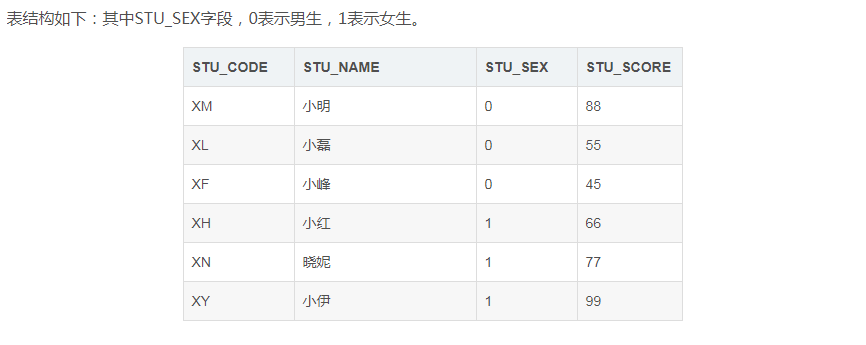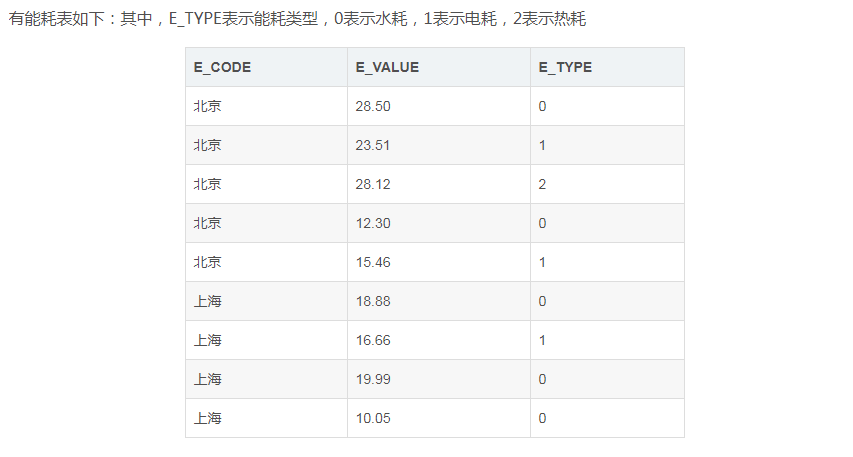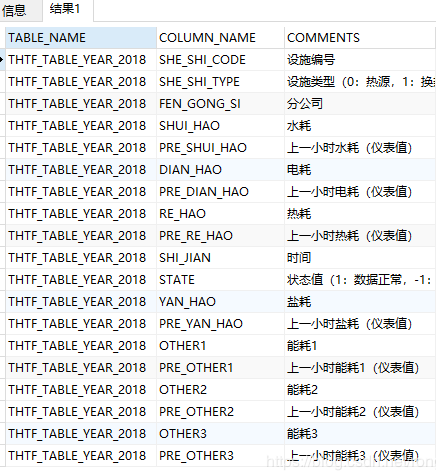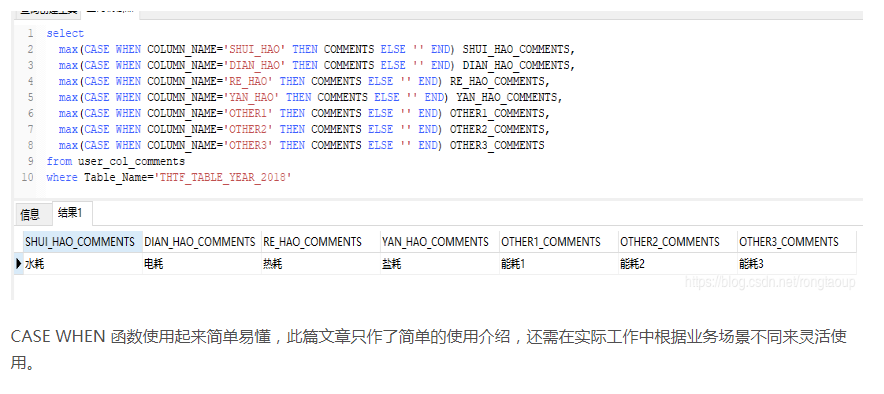Simple CASE WHEN functions can only deal with some simple business scenarios, while CASE WHEN conditional expressions are written more flexibly.
CASE WHEN conditional expression function: Similar to IF ELSE statement in JAVA.
Simple CASE WHEN function:
CASE SCORE WHEN 'A' THEN 'excellent' ELSE 'Fail,' END CASE SCORE WHEN 'B' THEN 'good' ELSE 'Fail,' END CASE SCORE WHEN 'C' THEN 'in' ELSE 'Fail,' END
Equally, CASE WHEN conditional expression function is used to implement:
CASE WHEN SCORE = 'A' THEN 'excellent' WHEN SCORE = 'B' THEN 'good' WHEN SCORE = 'C' THEN 'in' ELSE 'Fail,' END
The value behind THEN should be the same as that behind ELSE, otherwise an error will be reported. As follows:
CASE SCORE WHEN 'A' THEN 'excellent' ELSE 0 END
If the data types of'You'and'0' are inconsistent, an error will be reported:
[Err] ORA-00932: Data type inconsistency: should be CHAR, but obtained NUMBER
Simple CASE WHEN functions can only deal with some simple business scenarios, while CASE WHEN conditional expressions are written more flexibly.
CASE WHEN conditional expression function: Similar to IF ELSE statement in JAVA.
Format:
CASE WHEN condition THEN result [WHEN...THEN...] ELSE result END
Conditionis an expression that returns a Boolean type. If the expression returns true, the entire function returns the corresponding result value. If the expression is false, the result value after ElSE is returned. If the ELSE clause is omitted, NULL is returned.
Here are some common scenarios.
Scenario 1: Score score, score < 60 returns fail, score > = 60 returns pass, score > = 80 returns excellent.
SELECT STUDENT_NAME, (CASE WHEN score < 60 THEN 'Fail,' WHEN score >= 60 AND score < 80 THEN 'pass' WHEN score >= 80 THEN 'excellent' ELSE 'abnormal' END) AS REMARK FROM TABLE
Note: If you want to judge whether score is null, WHEN score = null THEN'absence test', which is a wrong way of writing, the correct way of writing should be:
CASE WHEN score IS NULL THEN 'Absent examination' ELSE 'normal' END
Scenario 2: Now the teacher wants to count how many male and female students are in the class, and how many male and female students pass the class, and how many female students pass the class.

SELECT SUM (CASE WHEN STU_SEX = 0 THEN 1 ELSE 0 END) AS MALE_COUNT, SUM (CASE WHEN STU_SEX = 1 THEN 1 ELSE 0 END) AS FEMALE_COUNT, SUM (CASE WHEN STU_SCORE >= 60 AND STU_SEX = 0 THEN 1 ELSE 0 END) AS MALE_PASS, SUM (CASE WHEN STU_SCORE >= 60 AND STU_SEX = 1 THEN 1 ELSE 0 END) AS FEMALE_PASS FROM THTF_STUDENTS

Scenario 3: Classic row-column transitions and statistics with aggregation functions
Now it is required to count the total water consumption, electricity consumption and heat consumption of each city, using an SQL statement to output the results.

SELECT E_CODE, SUM(CASE WHEN E_TYPE = 0 THEN E_VALUE ELSE 0 END) AS WATER_ENERGY,--Water consumption SUM(CASE WHEN E_TYPE = 1 THEN E_VALUE ELSE 0 END) AS ELE_ENERGY,--power consumption SUM(CASE WHEN E_TYPE = 2 THEN E_VALUE ELSE 0 END) AS HEAT_ENERGY--Heat consumption FROM THTF_ENERGY_TEST GROUP BY

Scenario 4: Using subqueries in CASE WHEN
According to the amount of urban electricity consumption, the cost of electricity consumption is calculated. Assuming that the unit price of power consumption is divided into three grades, the corresponding price is used to calculate the cost according to different energy consumption values.

When the energy consumption value is less than 10, the value of P_PRICE when P_LEVEL=0 is greater than 10, and the value of P_PRICE when P_LEVEL=1 is less than 30.
CASE WHEN energy <= (SELECT P_LIMIT FROM TABLE_PRICE WHERE P_LEVEL = 0) THEN (SELECT P_PRICE FROM TABLE_PRICE WHERE P_LEVEL = 0) WHEN energy > (SELECT P_LIMIT FROM TABLE_PRICE WHERE P_LEVEL = 0) AND energy <= (SELECT P_LIMIT FROM TABLE_PRICE WHERE P_LEVEL = 1) THEN (SELECT P_PRICE FROM TABLE_PRICE WHERE P_LEVEL = 1) WHEN energy > (SELECT P_LIMIT FROM TABLE_PRICE WHERE P_LEVEL = 1) AND energy <= (SELECT P_LIMIT FROM TABLE_PRICE WHERE P_LEVEL = 2) THEN (SELECT P_PRICE FROM TABLE_PRICE WHERE P_LEVEL = 2)
Scenario 5: Combining max aggregation functions


